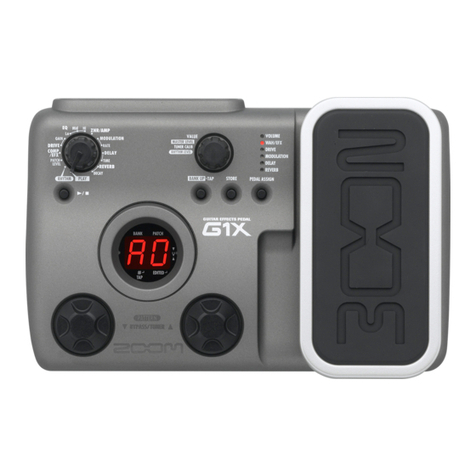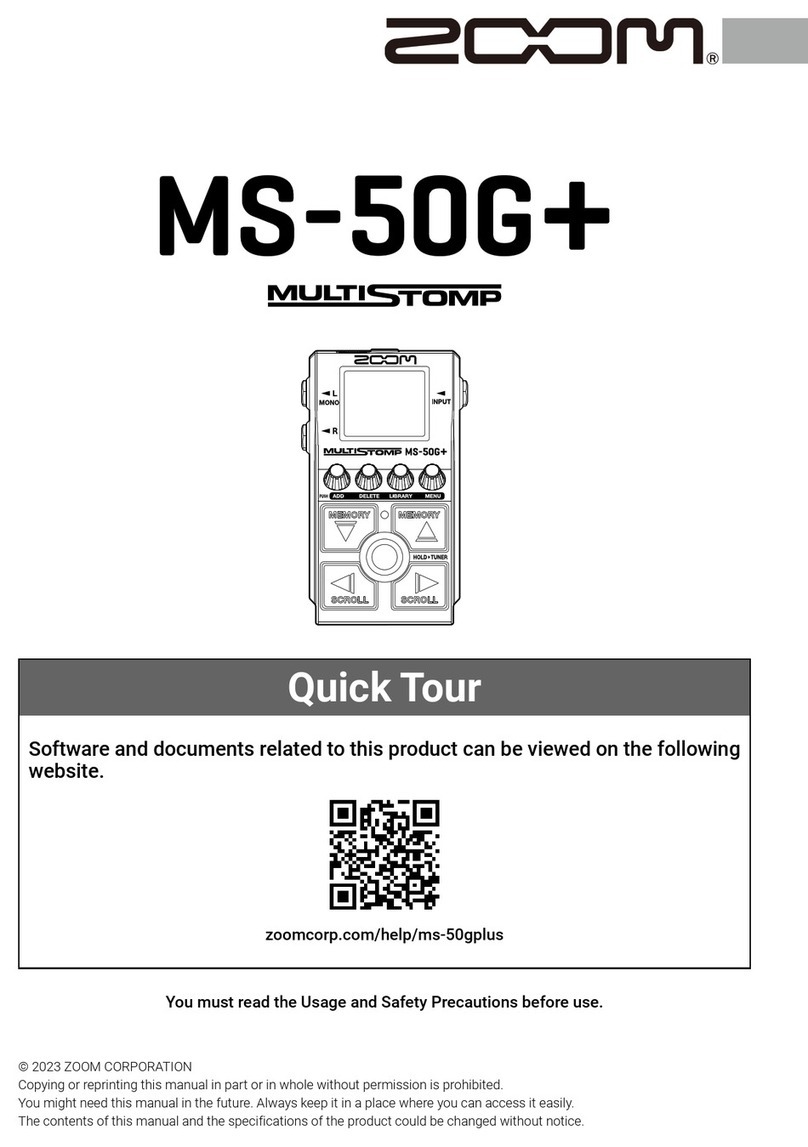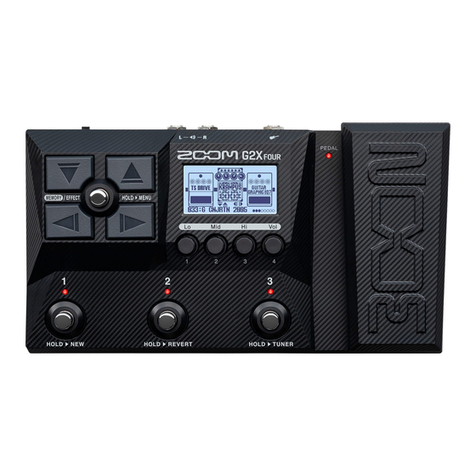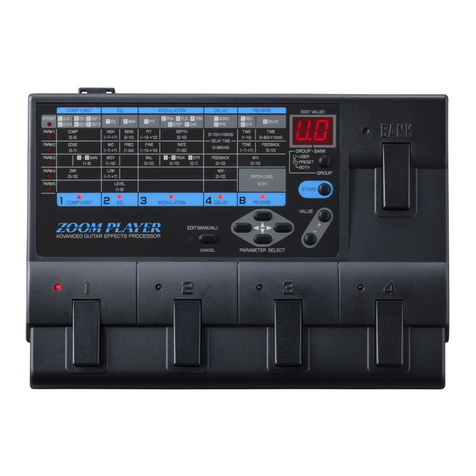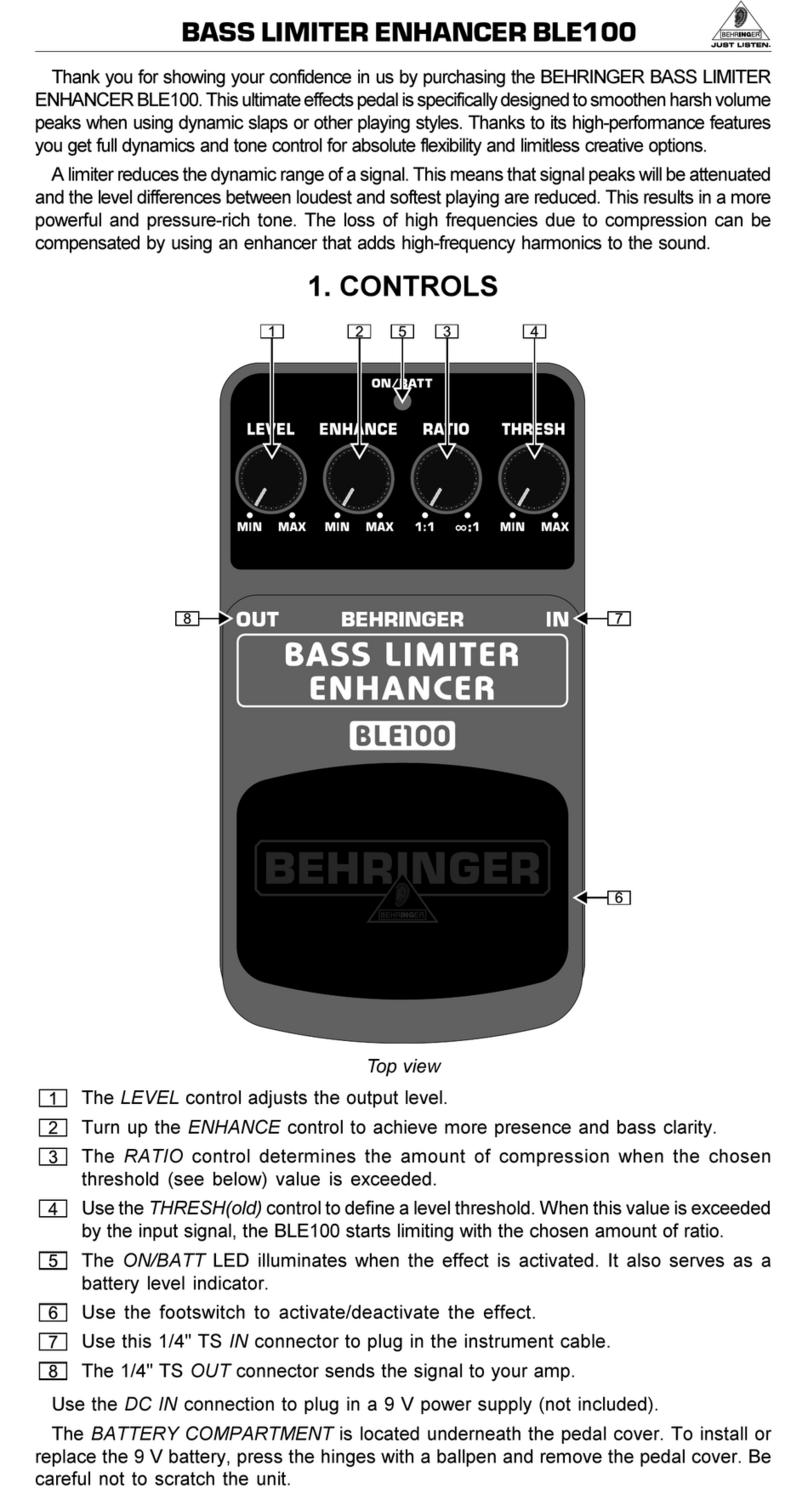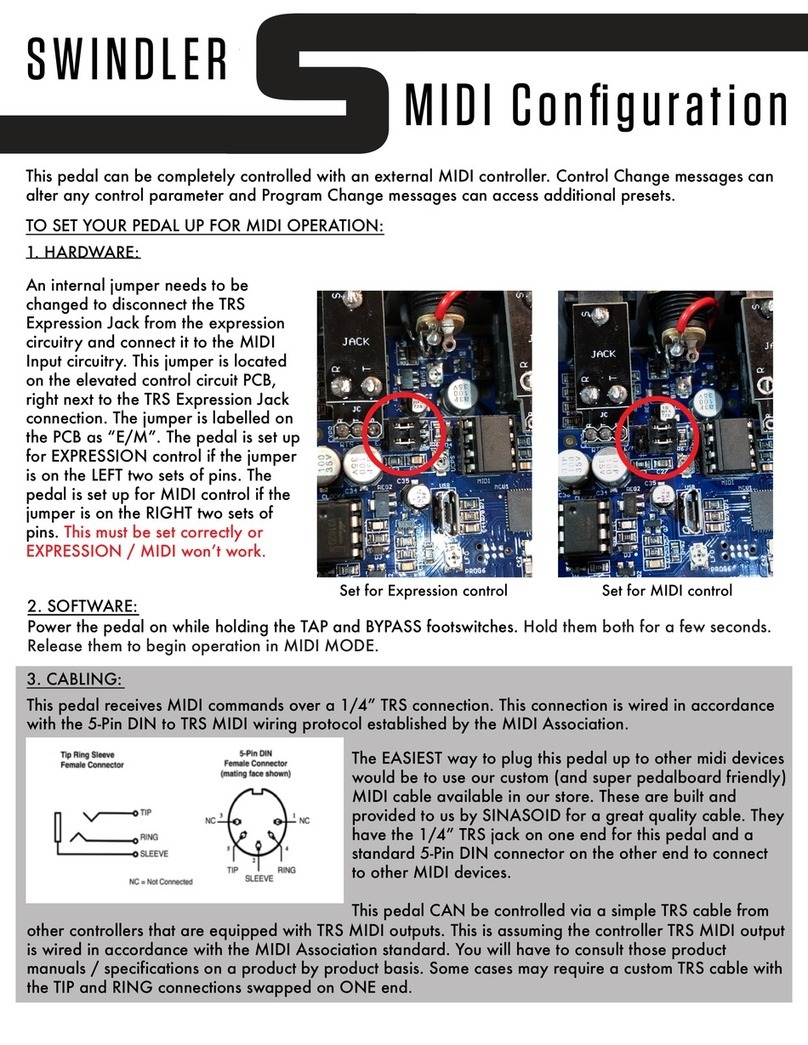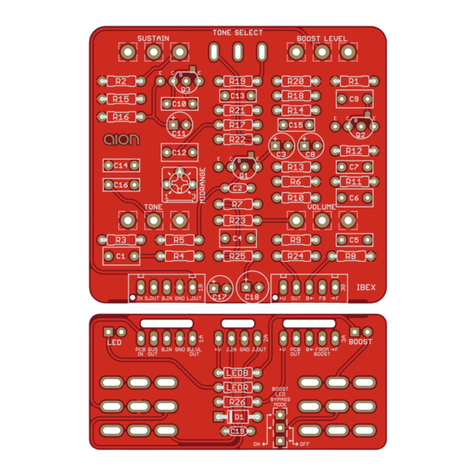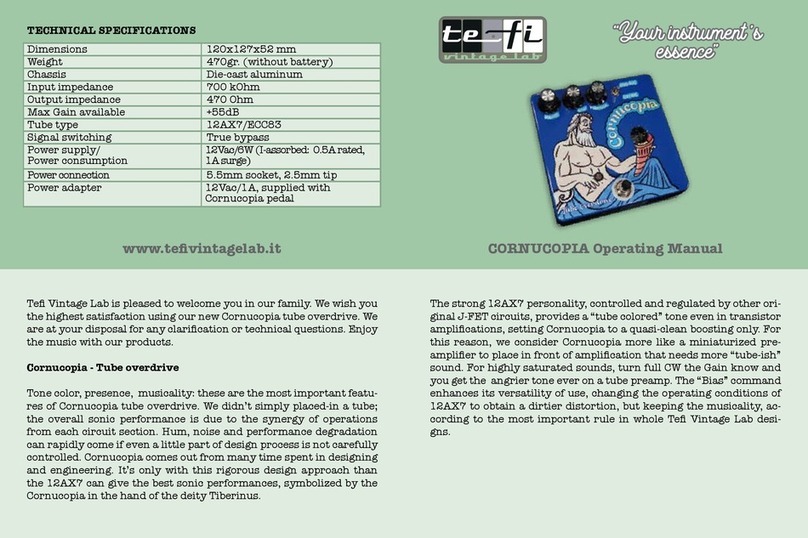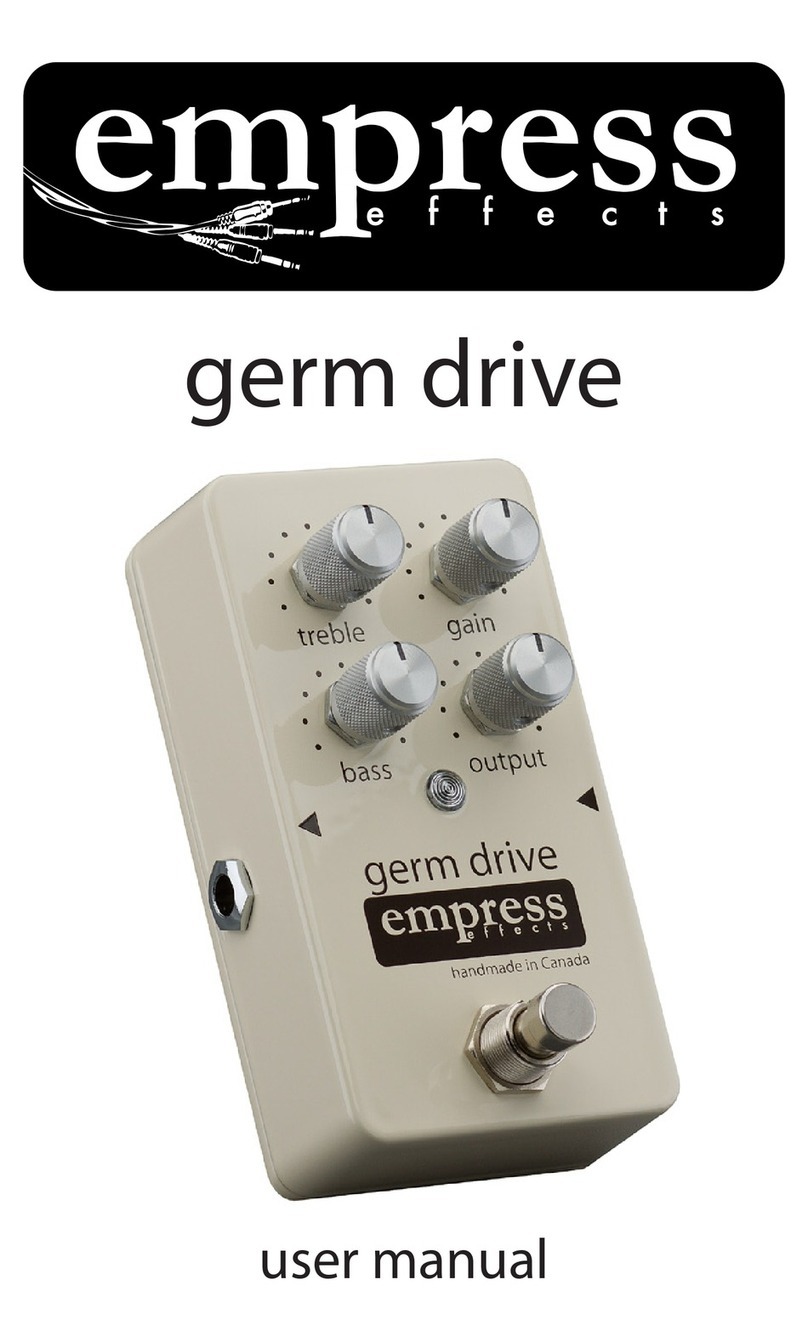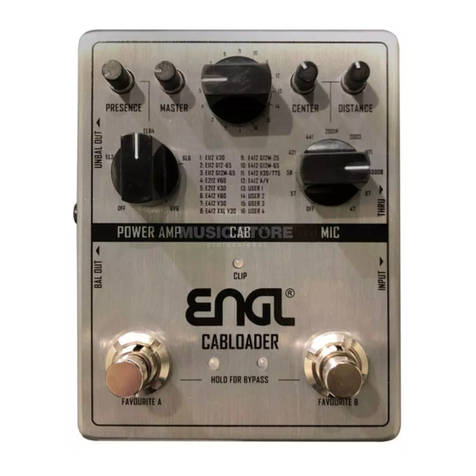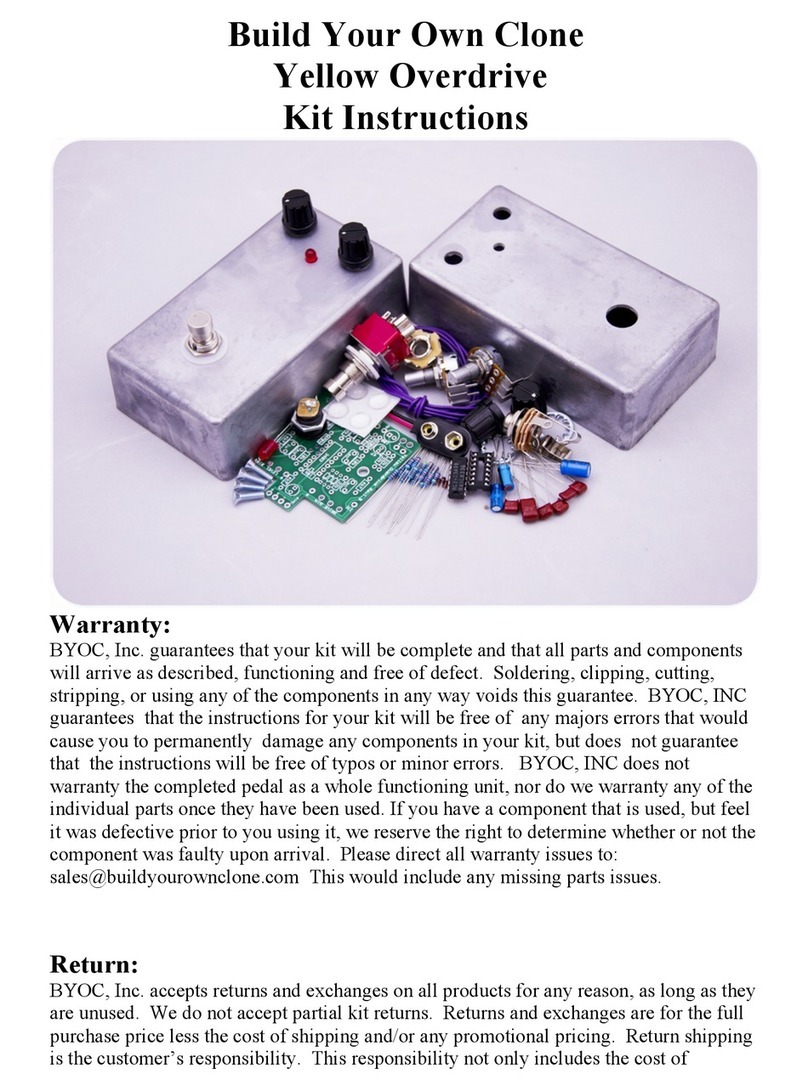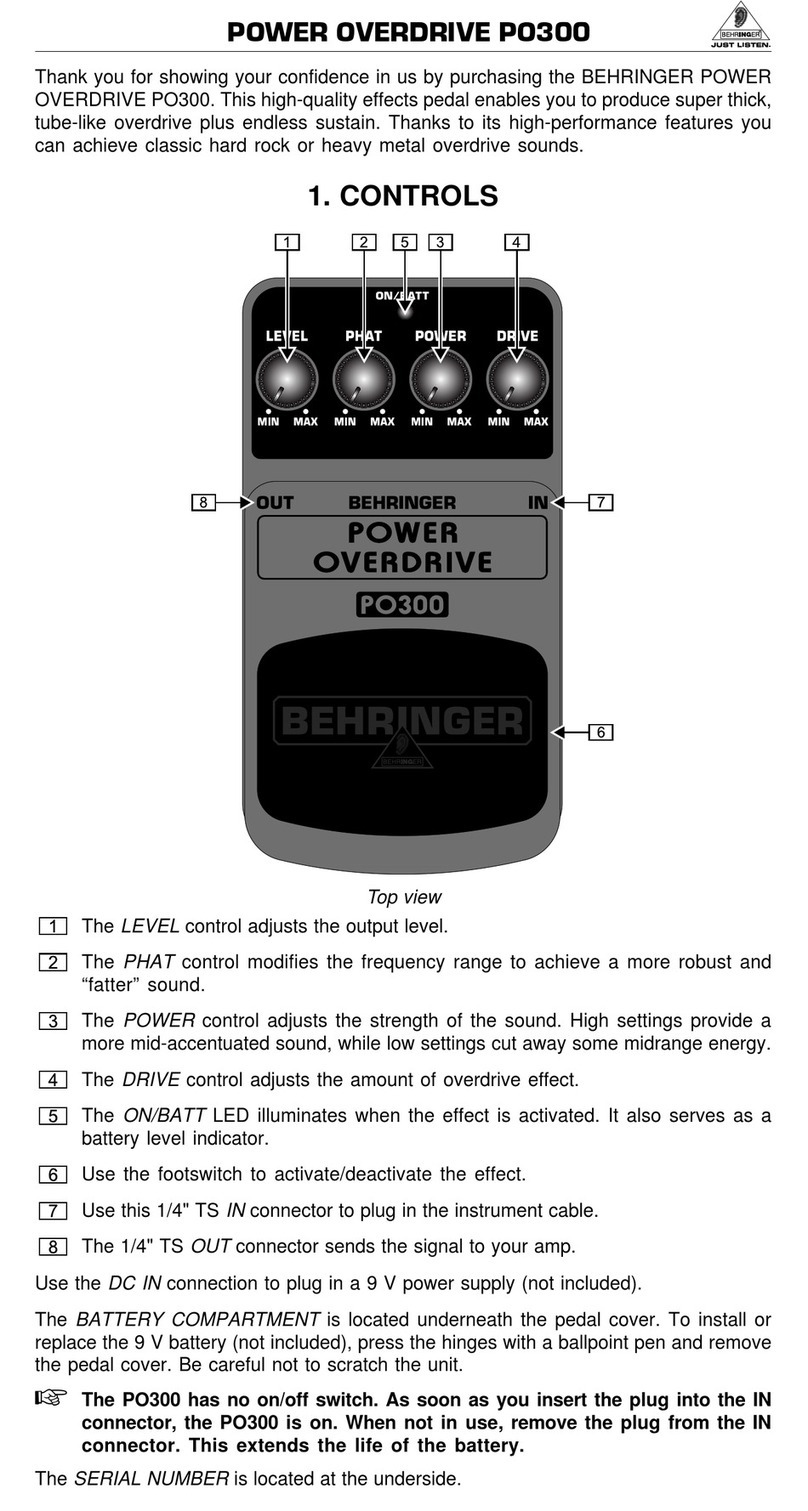Zoom ADSL X3 User manual

X
3 & X4
USER MANUAL

NOTICE
This document contains proprietary information protected by
copyright, and this Manual and all the accompanying hardware,
software, and documentation are copyrighted. No part of this
document may be photocopied or reproduced by mechanical,
electronic, or other means in any form.
The manufacturer does not warrant that the hardware will work
properly in all environments and applications, and makes no
warranty or representation, either expressed or implied, with respect
to the quality, performance, merchantability, or fitness for a
particular purpose of the software or documentation. The
manufacturer reserves the right to make changes to the hardware,
software, and documentation without obligation to notify any person
or organization of the revision or change.
All brand and product names are the trademarks of their respective
owners.
© Copyright 2010
All rights reserved.

Contents
OVERVIEW ........................................................................................... 4
INSTALLATION INSTRUCTIONS ........................................................... 5
INSTALLING THE X3 OR X4.......................................................................... 6
CONNECTING A NETWORK DEVICE...................................................15
STATUS MONITORING ........................................................................17
WHY MONITOR STATUS? ............................................................................17
MONITORING ADSL STATUS..................................................................... 17
ADVANCED SETUP OPTIONS ..............................................................19
HOW TO USE THE ADVANCED OPTIONS................................................. 19
CHANGING YOUR WAN SETTINGS ..........................................................21
USING IP FILTERS ........................................................................................22
MANAGEMENT AND DIAGNOSTICS ................................................... 23
REMOTE ACCESS TO YOUR MODEM CONFIGURATION SETTINGS....... 24
CHANGING USER NAMES AND PASSWORDS ............................................ 25
BACKING UP YOUR CONFIGURATION......................................................26
RESETTING DEFAULT SETTINGS ...............................................................27
DIAGNOSTICS ...............................................................................................28
APPENDIX A: ADSL INTERNET SETTINGS TABLES .......................... 29
APPENDIX B: TOP AND BACK PANELS............................................... 35
APPENDIX C: TCP/IP NETWORK SETTINGS .................................... 36
APPENDIX D: TROUBLESHOOTING ................................................... 42
APPENDIX E: CONFIGURING YOUR WEB BROWSER ......................... 46
APPENDIX F: GETTING HELP ........................................................... 52
APPENDIX G: REGULATORY INFORMATION ..................................... 53

Overview 4
Overview
The X3 and X4 integrate an ADSL modem, router, and firewall in
one device. You can plug a computer into the X3 or X4, or you
can plug in a network device such as a wireless access point or
switching hub. The X4 also has a USB port for Windows
computers that do not have an available Ethernet port.
This User Manual contains installation instructions for direct
connection of a Windows, Macintosh, or Linux computer. If you
want to plug in a network device instead, you first install the X3 or
X4 using a computer, and then install the network device.
In addition to installation instructions, this manual has information
about the X3 and X4’s advanced setup options. Most users will not
need to use the advanced setup options, but these are useful for
setting up security and various network parameters.

Chapter 3: Status Monitoring 5
1
Installation Instructions
This chapter covers the basic instructions needed to connect
your X3 or X4 to a computer and to the Internet. These
instructions can be used for computers with a Windows,
Macintosh, or Linux operating system. If you want to connect
your X3 or X4 to a network device instead of a computer, you
should first do the installation for a computer and then connect
to the network device. If you already installed and connnected
your X3 or X4, you can skip this chapter and begin with
Chapter 2 on page 14.
Package Contents
Your package contains the following items:
•Zoom X3 or X4 ADSL Modem
•Phone Cord
•Ethernet Cable
•Power Cube
•Software CD-ROM
The CD contains the installation software, User Manual, and
Customer Support information.
If anything is missing or damaged, please contact Zoom Customer
Support or whoever sold you the modem.
In addition, the package may include:
•Phone-jack adapter to adapt the phone cord to a particular
phone jack (certain countries only)

6
•ADSL line filter(s) (certain models only).
Before You Begin
Before you begin installing the X3 or X4 modem using this manual,
you must have the following available to you:
•ADSL service enabled on your telephone line. To do this,
you need to sign up with an ADSL service provider. Once this
service is enabled, you should have an ADSL-enabled
telephone wall jack to plug the X3 or X4 modem into. (Your
service provider may refer to “ADSL service” as “DSL
service.”)
•A computer. The X3 and X4 supports the connection of a
Windows, Macintosh, or Linux computer with an Ethernet
port. The X4 also supports the connection of a Windows
computer with a USB port.
•[Optional] Network device: You can connect the X3 or X4
to a network device such as a wireless access point or switching
hub. If you plan to connect a network device, you should first
do an installation with a computer connected directly to the X3
or X4. Once that’s working, you connect the X3 or X4 to the
network device.
Installing the X3 or X4
• To reduce the risk of fire, use the supplied phone cord.
• Do not use this product near water — for example, in a wet
basement or next to a swimming pool.
Go to Step 2 now if you have an X3. If you have an X4, go to Step
2 now if your computer has an available Ethernet port.

Chapter 3: Status Monitoring 7
Step 1: Installing the Software
(Only for X4 Users who Choose
to Connect to the X4 USB Port)
If your connection to the X4 modem is an Ethernet port, or if you
have an X3 modem, you do not have to install software. Go to
Step 2: Installing the Modem.
Otherwise, continue with the section below.
1Turn on the computer (Windows 7, Vista, XP, or 2000) that
you will use for setup.
2Close any open programs, including any antivirus software or
pop-up blockers.
3If your computer doesn’t have a drive for your CD, go to step
11 below.
4Insert the supplied CD into the CD drive of your computer.
The CD should start automatically.
If the CD does not start automatically:
For Windows 7 users: Right-click on the Start button. Select
Properties and then Customize. Select Run Command from
the list and then select OK. Then click Apply and then click
OK. Click on the Start button and click Run. Then type
E:\setup.exe, where Eis the letter of your CD drive.
For all other Windows users: Click the Windows Start button, click
Run, and then type E:\setup.exe, where Eis the letter of
your CD drive.
For Windows 7 / Vista users only: If the AutoPlay dialog box
appears, click Run Setup.exe. If the User Account Control
dialog box appears, click Yes or Allow.
For Windows XP users only: If a Windows logo testing disclaimer
appears, click Continue Anyway.
For Windows 2000 users only: If a Digital Signature Not Found
dialog appears, click Yes.Then click Finish.

8
5Select your language. The Main Menu screen opens.
6Click Install Assistant.
For Windows7 / Vista users only: If a message tells you that
Windows can't verify the publisher of the driver software,
select Install this driver software anyway.
7Click ADSL X4 Modem to start the software installation, then
click Next when prompted.
8When the installation is complete, click Finish, then click
Exit.
9Remove the CD from the CD-ROM drive.
10 Shut down the computer.
11 Installing the Software If You Don't Have a CD-ROM
Drive in Your Computer
Connect to the Internet through an alternate computer (e.g.
work computer, etc.) and download the software from Zoom’s
tech support page by typing the following URL for your Zoom
X4 modem in your browser's address bar:
http://www.zoom.com/techsupport/adsl/adsl_5751a.shtml
Follow the on-screen instructions to download the software.
Save the software on a USB memory “thumb” drive. Plug this
“thumb” drive into your computer, then download and install
the software on your computer following the on-screen
instructions. Then shut down the computer.
Congratulations! You have installed the software. Now, continue
with the next section, Step 2: Connecting the Modem to a
Computer.
Step 2: Connecting the Modem
to a Computer
1Put the X3 or X4 modem near the computer to be used for
setup.

Chapter 3: Status Monitoring 9
2Connect one end of the supplied Ethernet cable to the
computer’s Ethernet port and the other end to your modem’s
Ethernet port. If you choose to use a USB cable instead,
connect one end of a USB cable to the computer’s USB port
and the other end to your modem’s USB port.
Back Panel Diagram
LINE ETHERNET RESET USB POWER
Note: The USB port is for X4 modems only.
3Connect the supplied phone cord between your modem’s
LINE jack and a phone jack with ADSL service.
4Plug the supplied power cube into the X3 or X4 modem, and
then into a power outlet.
Important: Use only the power cube shipped with your X3 or
X4 modem. Other power cubes may damage the device.
The POWER LED on the modem’s top panel should turn on.
5Turn on the computer. The ETHERNET LED on your
modem’s top panel should turn on if you are using the
Ethernet port. After a few seconds, your ADSL LINE LED
will begin blinking, then become solid. If it does not become
solid, please refer to Appendix D: Troubleshooting.
For Windows XP users only: If a Found New Hardware Wizard
dialog opens and asks if you want to do a search for the
drivers, select No, not this time, then click Next. When the
Found New Hardware Wizard dialog reopens, select Install
the software automatically and click Next. If a Windows
logo testing disclaimer appears, click Continue Anyway. Click
Finish to close the application.
For Windows 2000 users only: If a Digital Signature Not Found
dialog appears, click Yes.Then click Finish.

10
Step 3: Establishing
Communication
Important!
Mac users must make sure that the computer’s TCP/IP settings are
configured properly BEFORE starting this section. See Macintosh
TCP/IP Settings.
1Open your Web browser, enter 192.168.1.1 in the address bar,
and press the Enter key to open the modem configuration
pages.
2In the Authentication Required dialog box, type the following
User Name and Password in lower case, then click OK.
User Name: admin
Password: zoomadsl
3The Zoom Configuration Manager opens and displays its
Basic Setup page.
4You may choose to use either the Automatic Configuration
option or manually enter information provided by your service
provider in the Basic Setup page. We recommend using the
Automatic Configuration option. (If you are using a static IP
address, you must manually enter information to establish
communication.)
If you choose to manually enter information, please go to the
next section, which is called Read This Only if Your Are
Manually Entering Information Into the Basic Setup Page.
If you would like to use the Automatic Configuration option,
please go to step 5 below.
5Click on Start under Automatic Configuration. It may take up
to 2-3 minutes to detect your connection.
6If a PPPoE or PPPoA connection is detected, enter the
username and password provided by your service provider for
PPPoE or PPPoA protocols. (Your provider should have given

Chapter 3: Status Monitoring 11
you a User ID or User Name, usually your email address or
the characters preceding the @ sign in your email address, and a
Password. These are NOT the User ID and Password that
you used to get into the Basic Setup menu.) Click Next three
times to reach the Summary Page of the setup.
If a 1483 Bridged IP+NAT or 1483 Routed IP connection is
detected, click Next until you reach the Summary Page of the
setup.
7On the Summary Page, click Save/Reboot.
Congratulations! Your modem is now connected. To test your
installation, open your browser and go to a familiar Web site. If
your browser works, installation is complete for the computer you
used for setup. If your browser doesn't work, please refer to
Appendix D: Troubleshooting.
Read This Only if You Are
Manually Entering Information
Into the Basic Setup Page
1If your service provider gave you Protocol, VPI, VCI, and
Encapsulation settings and you are choosing to manually
enter information into the Basic Setup page, do the following:
aLeave the PVC box at PVC0.
bIf you have this information (Protocol,
Encapsulation, VPI, and VCI), select the correct
Protocol from the list. If you were not given this
information, please refer to the ADSL Internet
Settings Tables in Appendix A of this User
Manual to find Protocol, Encapsulation, VPI,
and VCI information for your provider / country.
cEnter the Encapsulation, VPI, and VCI in the
appropriate boxes.

12
dIf you selected PPPoE or PPPoA as your
Protocol,your provider should have given you a
User ID or User Name (usually your email
address or the characters preceding the @ sign in
your email address) and a Password. (These are
NOT the User ID and Password that you used to
get into the Basic Setup menu.)
eIf you cannot remember or cannot find your User
ID and Password, call your service provider and
ask for them. Then enter them in the appropriate
boxes. This information is required for PPPoE
and PPPoA protocols.
fIf you selected 1483 Bridged IP+NAT or 1483
Routed IP as your Protocol, the X3 or X4 can be
set for either a Dynamic Host Configuration
Protocol (DHCP) address (also known as a
dynamic IP address) or for a static IP address.
gBecause most Internet service providers use
DHCP, the X3 and X4 are set for dynamic IP
addressing by default.
hOnly advanced users who specifically want to use
static IP addressing and/or those users whose
Internet service provider specifically instructed
them to use static IP addressing should change
this setting. Your provider should have given you
four series of numbers for the IP (Internet
Protocol) Address, Subnet Mask, Gateway,
and DNS. Enter these numbers in the
appropriate boxes, and select Use the Following
IP Address.
iClick Save/Reboot.
jYour modem should now be properly connected.
To test your installation, open your browser and
go to a familiar Web site. If your browser works,
installation is complete for the computer you used

Chapter 3: Status Monitoring 13
for setup. In that case continue at If Your
Browser Works below. If your browser doesn't
work, please refer to the section If Your Browser
Doesn’t Work below.
If your Browser Works
Please consider these things:
A) Are you using your ADSL modem on the same phone line
where you’re also using other equipment such as telephones or
fax machines? If not, continue with B below. If you ARE, on
the other hand, you should put an ADSL filter between each
phone and the wall jack where the phone was connected. This
filter prevents interference between the modem and the phone
or other equipment. Your modem may have come with a
filter, and filters are also available from retailers of phones,
modems, and other electronics. The filter simply plugs into
the wall telephone jack, and the female PHONE end of the
filter connects to your telephone, fax machine, or other
equipment.
Phone
Filter Wall telephone jack
One form of filter is a splitter, which has one male plug and
two female jacks. This lets you use the same phone jack for

14
both an ADSL modem and a phone or other device. You plug
the splitter into the phone jack, plug the modem into the jack
that's typically marked ADSL, and plug the phone or other
device into the jack marked PHONE. You may use the splitter
as a filter; simply leave the ADSL jack open.
B) If you want to use your modem for more than one
computer, you will want to attach the modem to a wireless
access point, switching hub, or other appropriate network
device. In that case, please go to chapter 2 now. If you only
want to use your modem with one computer, please go to
chapter 3 now.
If Your Browser Doesn’t Work
Repeat steps 3–7 above and make sure that you enter the
information correctly (especially your Username and Password, if
your Encapsulation begins with PPP). If you still cannot connect,
look up your provider in the ADSL Internet Settings Tables in
Appendix A and try the setting(s) shown, if different.
If you did not connect and were using settings from the ADSL
Internet Settings Tables, return to the tables and find the next
most frequently used settings—those labeled (2) if you just entered
(1), or (3) if you just entered (2), and repeat steps 3–7 above. If
this doesn’t work, please see Appendix D, Troubleshooting.

Chapter 3: Status Monitoring 15
2
Connecting a Network Device
If you want to connect your X3 or X4 to only one computer,
please go to chapter 3 now. If you want to connect the X3 or X4
to a network device such as a wireless access point or a switching
hub, please continue reading chapter 2 below.
This section provides general instructions for connecting a network
device to the X3 or X4. For information about setting up your
network device, please refer to the documentation that came with
that device.
1Once you have configured the X3 or X4, you can disconnect
the Ethernet cable from the computer. One end of the
Ethernet cable should still be plugged into the LAN port of
the X3 or X4.
2Plug the other end of the Ethernet cable into the network
device’s Ethernet port. (For a hub or a switch, this is typically
called an Uplink or Expansion port. For a router or wireless
access point, this is typically called a WAN port.)
3Set up your network. Refer to the documentation provided
with your particular network device for instructions on how to
do this.
4Once your network is set up, reboot any computer that is part
of the network. For example, if you are connecting a wireless
access point, reboot any computer that will use the wireless
network.
5Verify that your Internet connection is working. Open the
Web browser (e.g., Internet Explorer or Mozilla Firefox) on

16
each computer using your network and try to connect to a
familiar Web address.
Note: If at any time you need to make changes to the ADSL
modem configuration, open a web browser from any PC on
your ADSL modem’s network and type 192.168.1.1 to open
the modem’s Setup pages. Alternately, you can connect a
computer directly to the X3 or X4, open its browser, and then
type 192.168.1.1. Note also that you can configure the
Management section of the X3 or X4 Setup pages to permit
configuration from a remote location.
Congratulations! You have connected your network device to the
Internet. Please continue with chapter 3.

Chapter 3: Status Monitoring 17
3
Status Monitoring
This chapter discusses how to check the status of your modem
and its ADSL connection.
Most users can skip this chapter, as it is primarily for advanced
users and for those who are instructed by their Internet service
provider or Zoom Technical Support to verify settings, usually
for troubleshooting. If you skip this section, you should go to
chapter 4.
Why Monitor Status?
The X3 and X4 provides easy-to-read screens for you to review the
status of the modem and its ADSL connection.
While most users will probably never need to check the status,
there are some cases in which it would be helpful. For example,
you may need to know the IP address assigned to you by your
Internet service provider.
For advanced users with special configuration needs, the status
information is useful for overall system maintenance.
Monitoring ADSL Status
If you want to check the status of your ADSL connection, click on
the Status link on the left pane in the Zoom Configuration
Manager. (If you forgot how to log in to the Zoom
Configuration Manager, see page 10.)
The Status page provides information about your ADSL
connection. For example, you can verify whether your ADSL

18
connection is active or not. You can also monitor related ADSL
parameters—for example, how fast the X3 or X4 is transferring
data (Downstream Speed and Upstream Speed), your WAN
settings, your LAN settings, and so forth.
Note:
The Status page does not provide a way to change any of these
settings—see Chapter 3: Advanced Setup Options, if you need
to make changes to these settings.

Chapter 4: Advanced Setup Options 19
4
Advanced Setup Options
The options that are set by default when the X3 or X4 is
installed are sufficient for most users. However, those that want
or need to change the X3 or X4’s settings can do so using the
Advanced Setup page. This chapter explains how to specify
advanced options.
The information in this chapter applies to you if:
•Your Internet service provider instructs you to enable,
disable, or change the default settings for your X3 or X4 in
order for it to work properly with your ADSL service. See
How To Use the Advanced Options on page 19 for a table
listing the Advanced Setup areas that you can customize.
•You need to change your Wide Area Network settings. See
Changing Your WAN Settings on page 21 for more
information.
•You want to add, remove, or change the IP Filters. See
Using IP Filters on page 22 for more information.
If none of these items applies to you, you should continue with
chapter 5, Management and Diagnostics.
How To Use the Advanced
Options
Configuring the X3 or X4 for the situations described at the
beginning of this chapter requires the use of the Advanced Setup
page. To access this page, click on the Advanced Setup link on the

20
left pane in the Zoom Configuration Manager. (If you forgot
how to log in to the Zoom Configuration Manager, see page 10).
Advanced Setup Options
Use the links on the left pane in the Zoom Configuration
Manager under Advanced Setup Options to perform advanced
configuration tasks.
The following table lists each option under Advanced Setup and
gives a brief description of the settings you can specify.
Open page
from… This button… Opens a page that lets you…
Advanced
Setup WAN Specify how your Wide Area Network ADSL setup
is configured.
Advanced
Setup LAN Configure LAN IP Address, LAN DHCP Server
Pool, Fixed DHCP Mapping, set up a second LAN
IP Address, and IGMP Snooping.
Advanced
Setup NAT Configure Virtual Servers (Port Forwarding), Port
Triggering, and a DMZ.
Advanced
Setup Security
(IP Filtering)
Set up rules to control the forwarding of incoming
and outgoing data between your LAN and the
Internet and within your LAN. For example, you
can create IP filter rules to block attempts by
certain computers on your LAN to access certain
types of data or Internet locations. You can also
block or allow incoming access to computers on
your LAN. This page displays the current filters
and lets you edit and add filters.
Advanced
Setup Parental
Control Allows for URL filters to be set up.
Advanced
Setup Quality of
Service
(Queue
Management
Configuration)
Allows different priorities to be assigned to
different applications, users, data, or guarantee a
certain level of performance to data (for upstream
only, not for downstream).
If Enable QoS checkbox is selected, choose a
default DSCP mark to automatically mark
incoming traffic without reference to a particular
classifier.
Other manuals for ADSL X3
1
This manual suits for next models
1
Table of contents
Other Zoom Music Pedal manuals

Zoom
Zoom G1on User manual

Zoom
Zoom G6 User manual
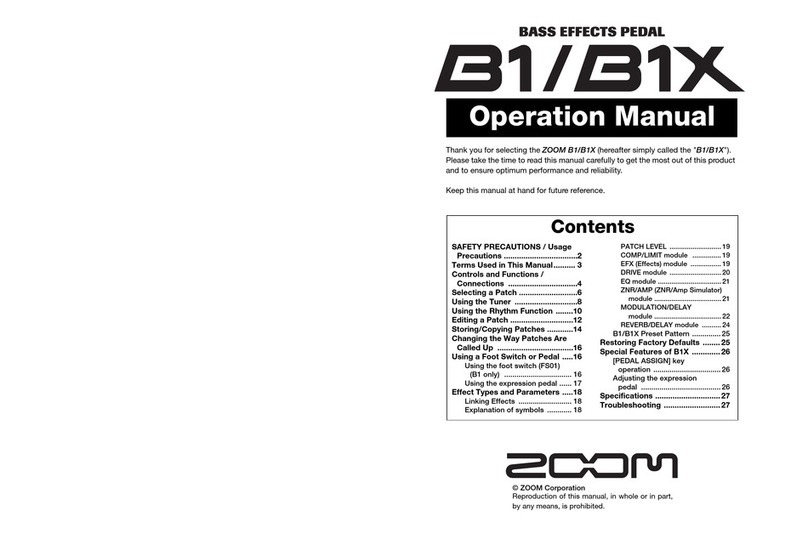
Zoom
Zoom B1 FOUR User manual

Zoom
Zoom B22 User manual

Zoom
Zoom 507 REVERB User manual
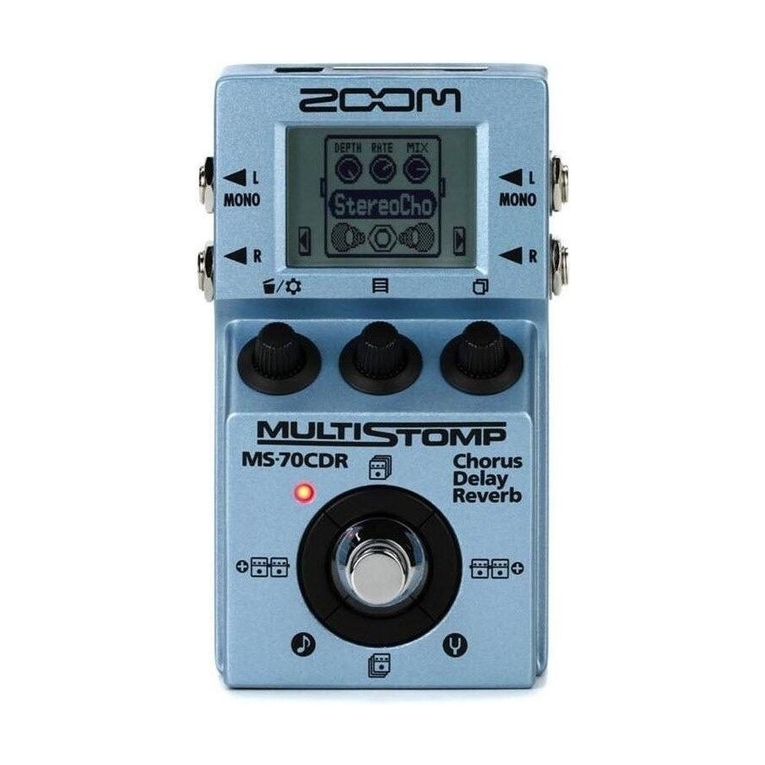
Zoom
Zoom Multistomp MS-70CDR User manual

Zoom
Zoom G2 User manual

Zoom
Zoom G1on User manual

Zoom
Zoom 509 Modulator User manual
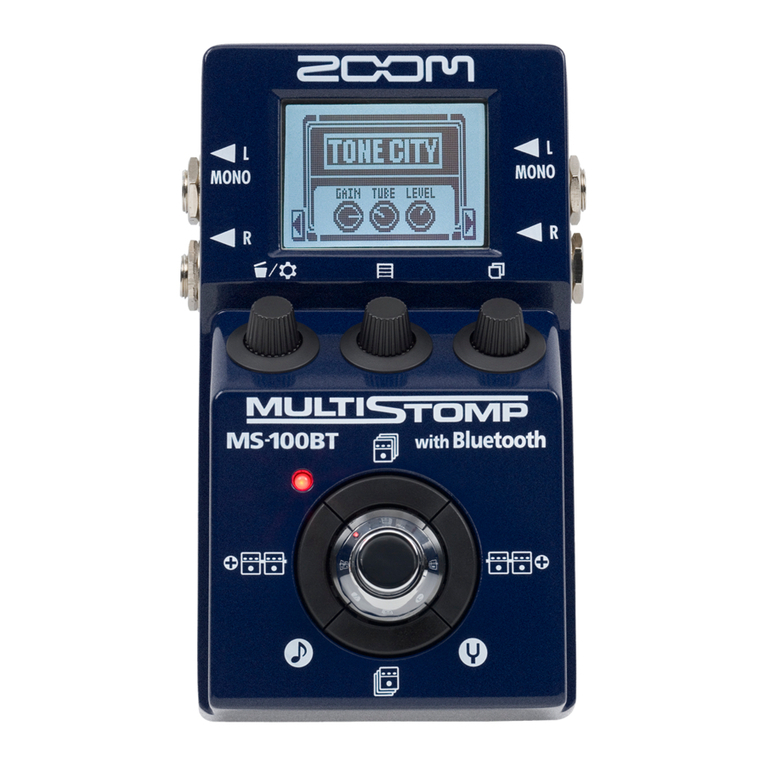
Zoom
Zoom MULTISTOMP MS-100BT General instructions



